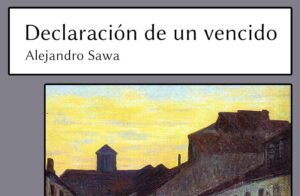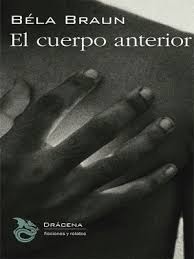
Original Language: Español
Year of publication: 1979
Valoración: Advisable
Maybe, and only maybe, this is not Sara Gallardo’s great novel. Maybe The rose in the wind Do not have the absorbent power of January (although something of January there are, for example, in characters like Teresa or Eleonora), the hallucinated and amazing atmosphere of Gojuaz (although something of Gojuaz there are, for example, in characters such as Olaf or Emperor Don Antonio) or the level of characters and the depth of psychological penetration of The greyhounds, the greyhounds (Although Dr. Borg or Andrei is not far), but it is a (very) good novel. But the bar was so high!
In any case, Sara Gallardo does not get off my particular podium in the “Argentine writers of the last 100 years”, in which Silvina Ocampo, Mariana Enriquez and Sara Gallardo are located. Because The rose in the windI insist, it is a (very) good novel, demanding and risky in the formal, fragmentary and evanescent. Novel, yes, but that could even be read as a collection of stories connected by threads, associations or coincidences.
Six chapters (or, rather, five chapters and a brief epilogue) make up The rose in the wind. Voices, characters and different places occupy the center of each of them. Gallardo Salta without any problem from the third to the first person or the epistolary genre, of the “romantic” novel to the most historical / hallucinatory or the “metaliterary”, but everything fits, nothing squeaks.
Thus, we go from Andrei’s love through Eleonora, from Lina by Andrei and Olaf, Olaf for Teresa, … or from Buenos Aires to Patagonia (and her eternal wind), from Patagonia to Rome … always promises of happiness, always women who break or try to break the life they lead because if not … What would we do without the banners, without the Patagonia, without the shipwrecks? And always the image of the petals people who fly, without making noise.
I can’t and should not finish the review without talking about Sara Gallardo’s style in The rose in the wind. It combines as few the brief, dry and arid phrase as the Patagonian landscape that stars part of the text, with the poetic. Its ability to generate beautiful and powerful image remains intact. It is best to leave a couple of examples (among the many that I have underlined):
Olaf cut half of the roasted bird flit and put it in its saddlebag. Then he signed the horse with the quiet abstraction of a planet that takes up his revolutions after a slight sidereal stumbling block.
Related to school maps raised the veins through the horse’s legs, orinocos and Amazonas absorbed in an ijar, which reappeared as thick ramifications by the Pacific breathing belly.
Even if only for these two images, the reading already deserves (and much) the penalty! But we should not stay alone in this. In The rose in the wind And in its echoes and influences (Antonio Di Benedetto, Saer, Carpentier, maybe?) We found brushstrokes of his “major” works and a good sample of which, for me, it is one of the key writers of Hispanic -American literature of the second half of the twentieth century.
Also by Sara Gallardo in Ulad: the greyhounds, the greyhounds, January and Eisejuaz
Source: https://unlibroaldia.blogspot.com/2025/06/sara-gallardo-la-rosa-en-el-viento.html


